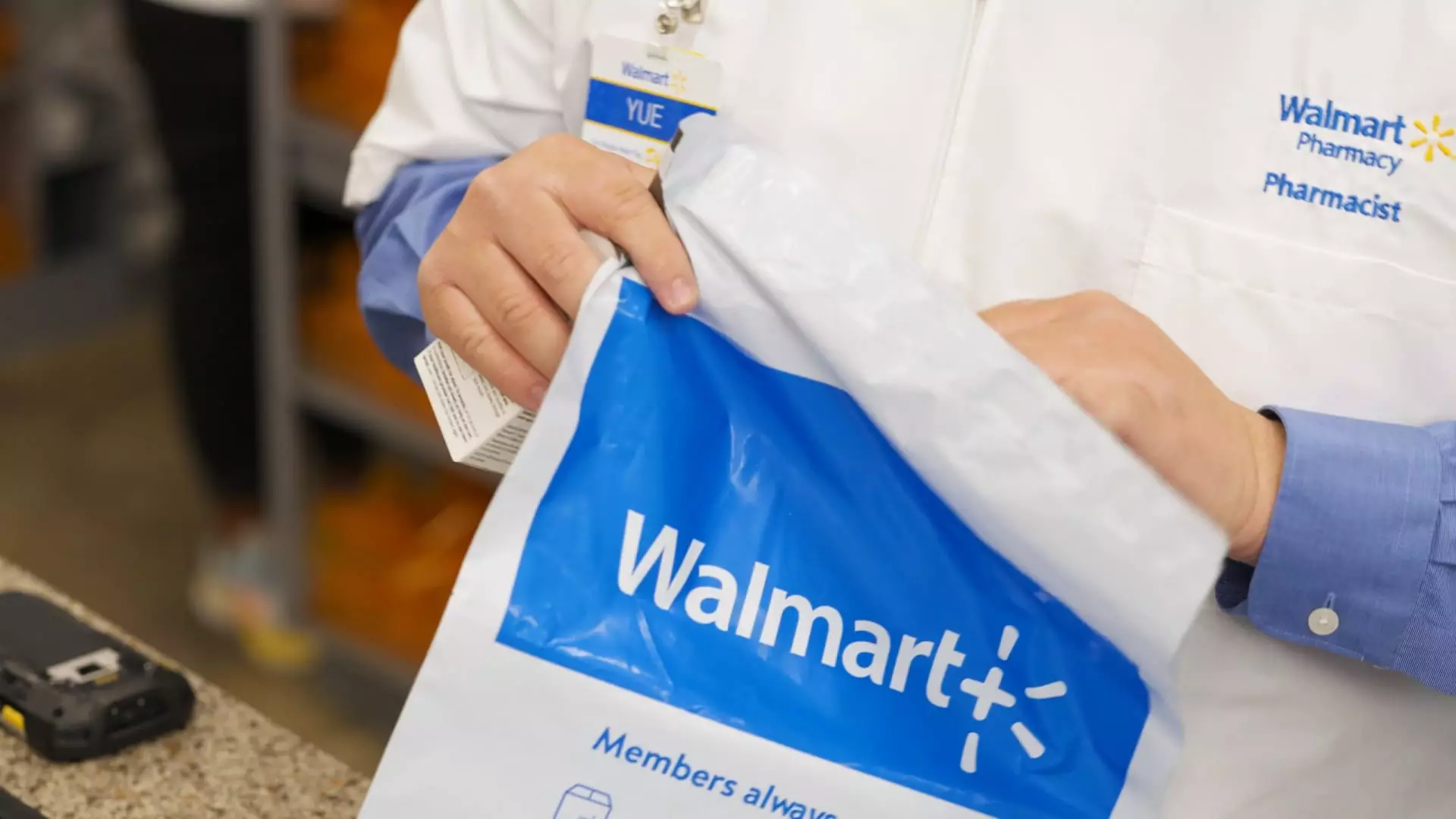As traditional pharmacy giants like CVS and Walgreens face mounting pressures in a rapidly evolving healthcare marketplace, Walmart is strategically positioning itself to capture a slice of the lucrative prescription delivery sector. With both CVS and Walgreens announcing significant store closures to combat dwindling profits and shifting consumer preferences, Walmart is seizing the opportunity to enhance its service offerings by introducing doorstep prescription deliveries. This move reflects a growing recognition that convenience is becoming a decisive factor for consumers when choosing where to fill their prescriptions.
Walmart has launched this delivery service across six states—Arkansas, Missouri, New York, Nevada, South Carolina, and Wisconsin—with plans to expand to 49 states by the end of January, albeit with an exclusion for North Dakota due to state regulations. In an era where customer expectations are rapidly changing, this initiative not only caters to a significant demand for convenience but also establishes Walmart as a fierce competitor in the pharmacy sector.
The introduction of prescription deliveries aligns with Walmart’s broader strategy to enhance convenience for its customers while maintaining competitive pricing. Tom Ward, Walmart’s Chief E-commerce Officer, emphasized that pharmacy deliveries were the “No. 1 service requested by our customers,” underscoring the importance of consumer feedback in shaping the company’s strategy. By offering a bundled delivery option that includes essential items like tissues and soup alongside prescription medications, Walmart is innovating the customer experience and illustrating its adaptability to consumer needs.
However, the question remains: how much market share can Walmart realistically gain from established players like CVS and Walgreens? While both companies currently offer varying delivery timelines—same-day to two-day delivery—it could be challenging for Walmart to encroach on their established markets. Yet, as CVS and Walgreens grapple with declining stock prices and profitability, Walmart’s entry into the prescription delivery space could pose a significant challenge.
Walmart has priced its prescription delivery service at $9.95 per transaction, mirroring the cost of its general delivery offerings. Yet, there lies an incentive for Walmart+ members, who will enjoy complimentary delivery services. This pricing strategy not only entices new customers to consider a membership plan but also aligns with Walmart’s reputation for affordability.
Moreover, the delivery of medications will incorporate enhanced safety measures, such as tamper-evident packaging, bolstering customer trust. Allowing customers to track their orders in real-time through the app or website further enhances transparency in the delivery process. Importantly, consultations will be conducted via phone for new prescriptions, ensuring patients still receive the necessary pharmacist guidance.
In its fiscal year ending January 31, health and wellness contributed approximately 12% of Walmart’s annual revenue, indicating the significance of this market segment. In a time when Walmart’s primary revenue is driven by grocery sales, the retailer recognizes an opportunity for growth within the health and wellness space through the facilitation of pharmacy services.
The current stock performance tells a compelling story: while Walmart’s shares have surged approximately 54% this year, CVS and Walgreens are experiencing severe declines, with stock prices plummeting by 26% and nearly 60%, respectively. This stark contrast underscores the shifting dynamics in the retail pharmacy landscape, compelling traditional pharmacies to reconsider their operational models and market strategies.
Challenges for Traditional Pharmacies
The pressures facing CVS and Walgreens extend beyond just competition with Walmart; they are grappling with more significant systemic challenges in the healthcare industry. Both companies are contending with declining reimbursement rates for prescription drugs, inflationary pressures, and the rise of competitors from the e-commerce sector like Amazon.
Recent leadership changes at CVS, with the resignation of CEO Karen Lynch, signal an urgent need for the company to recalibrate its strategy amid pressure from shareholders and activist investors. This urgency is further illustrated by CVS’s announcement of cutting $2 billion in expenses, including job reductions and targeted store closures.
Walgreens is likewise in a reactive mode, planning to shutter around 1,200 stores in the upcoming years due to profitability concerns among its extensive network of approximately 8,700 locations.
In this shifting landscape, Walmart’s prescription delivery service stands as a bold declaration of intention to redefine convenience within the healthcare sector. As retail pharmacy continues to undergo transformation, the ramifications of Walmart’s ambitious plan will become clearer in the coming months. While traditional players like CVS and Walgreens grapple with their challenges, the introduction of a well-received delivery service could provide Walmart with a unique competitive edge—a potential game-changer in the evolving world of pharmacy retail.

